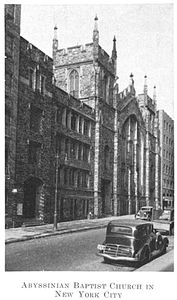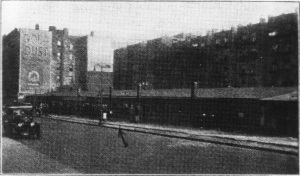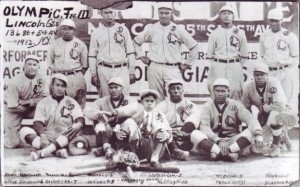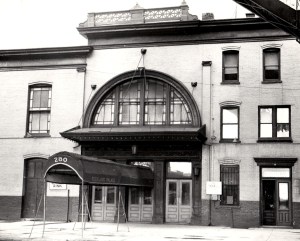The African-American community of Harlem was rooted in the churches. As Harlem transitioned from white to black, so did the congregations owning and operating many of the large churches. Black churches served as a place of worship, as well as athletic clubs, and choirs, and were the social fabric clothing the African-American community of Harlem. Places of worship also too shape from storefronts, commercial spaces, and private residences. In some cases, they were used as a front for the distribution of bootlegged alcohol. However, it was the large churches concentrated on or near Seventh Avenue that had the largest effect on the landscape. The streets would often fill with churchgoers and their joy, especially on Sunday mornings.

Fraternal orders such as the Prince Hall of Masons, and the Benevolent And Protective Order of Elks were also important components of the community. They were usually housed in large buildings or auditoriums, and many fraternal lodges emphasized music and bands. They conducted parades in the streets, where members wore uniforms and marched in bands on holidays, religious days, and lodge anniversaries. The connection to the church was strong. The Universal Negro Improvement Association, founded in 1918, met weekly in Liberty Hall on West 138th Street. The hall was adjacent to the Abyssinian Baptist Church, the largest black church in New York at the time.

Between Seventh and Lenox Avenues, people gathered to listen to soapbox speakers. This was an opportunity for political thinkers such as Hubert Harrison to speak their mind to fellow African-Americans.
Sporting events were also important. Until 1920, Olympic Field at 136th and Fifth Avenue was home to the all black Lincoln Giants baseball team. People came from all over to watch them play. Basketball was played in church gymnasiums; at the YMCA on 135th, and the YWCA at 137th; and later at the Manhattan Casino. Boxing matches were quite popular, especially if blacks were matched against whites. The white McMahon brothers promoted boxing matches held at the Commonwealth Casino on East 135th.


The places and establishments that were the most important in Harlem in the 1920s emphasized the gathering of African-American people. Whole streets outside such buildings would fill with citizens, where political ideas were exchanged, and where plain conversation took place. The large number of recognized places, as well as the scale of their attraction, makes it clear that they played an integral role in developing and maintaining a strong community.
Cynthia Hickman, Harlem Churches at the End of the Twentieth Century (New York, 2001).